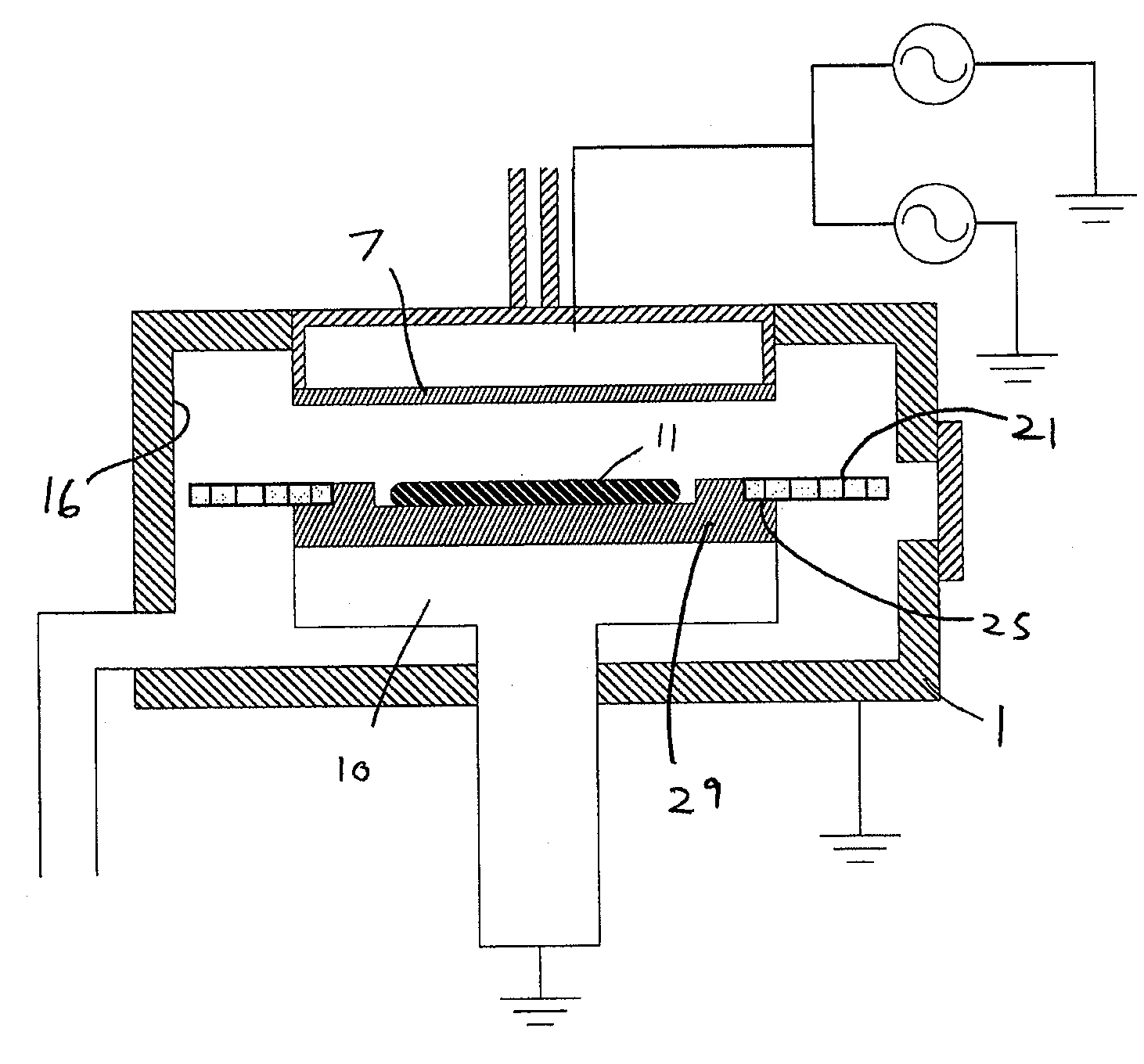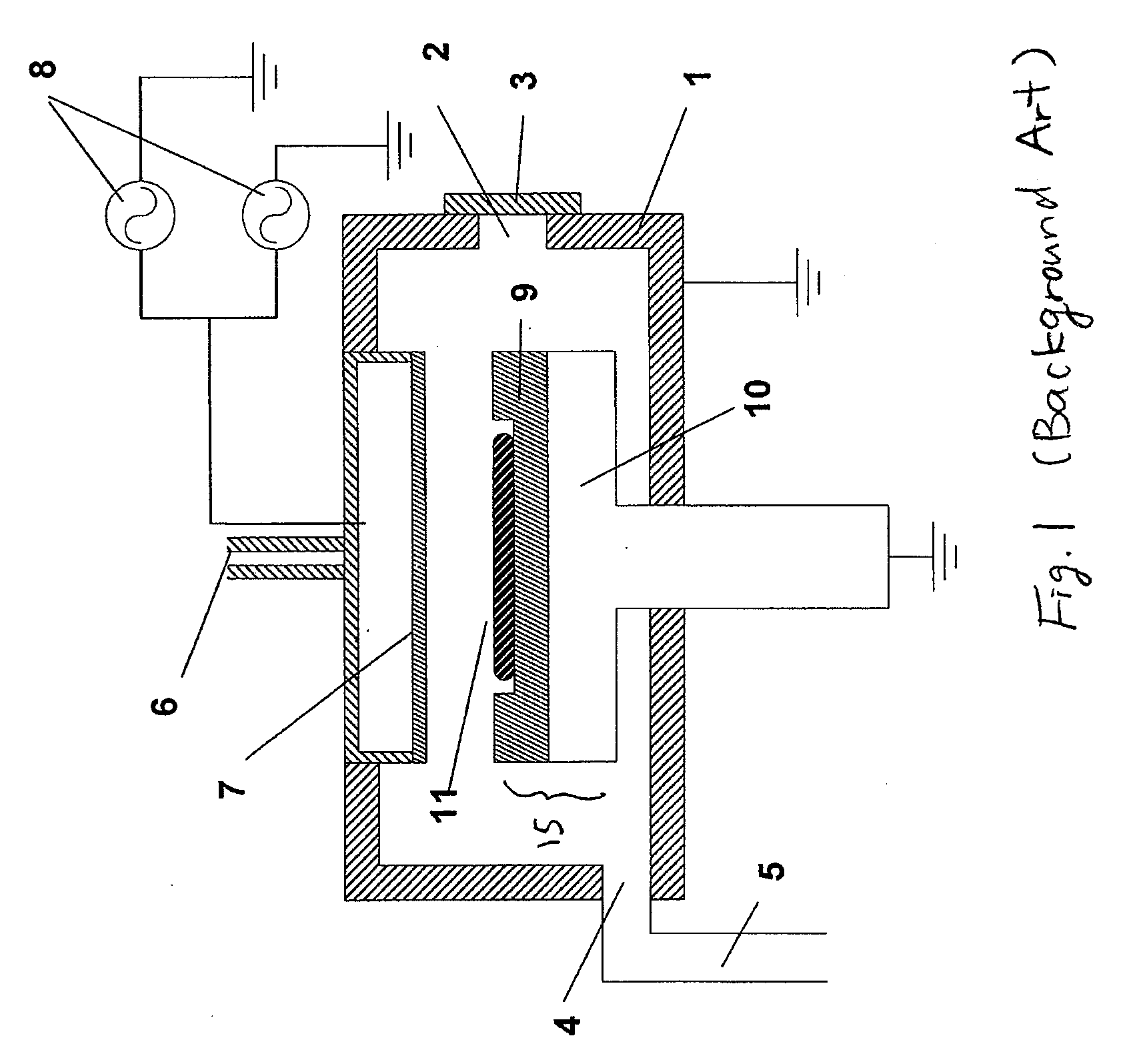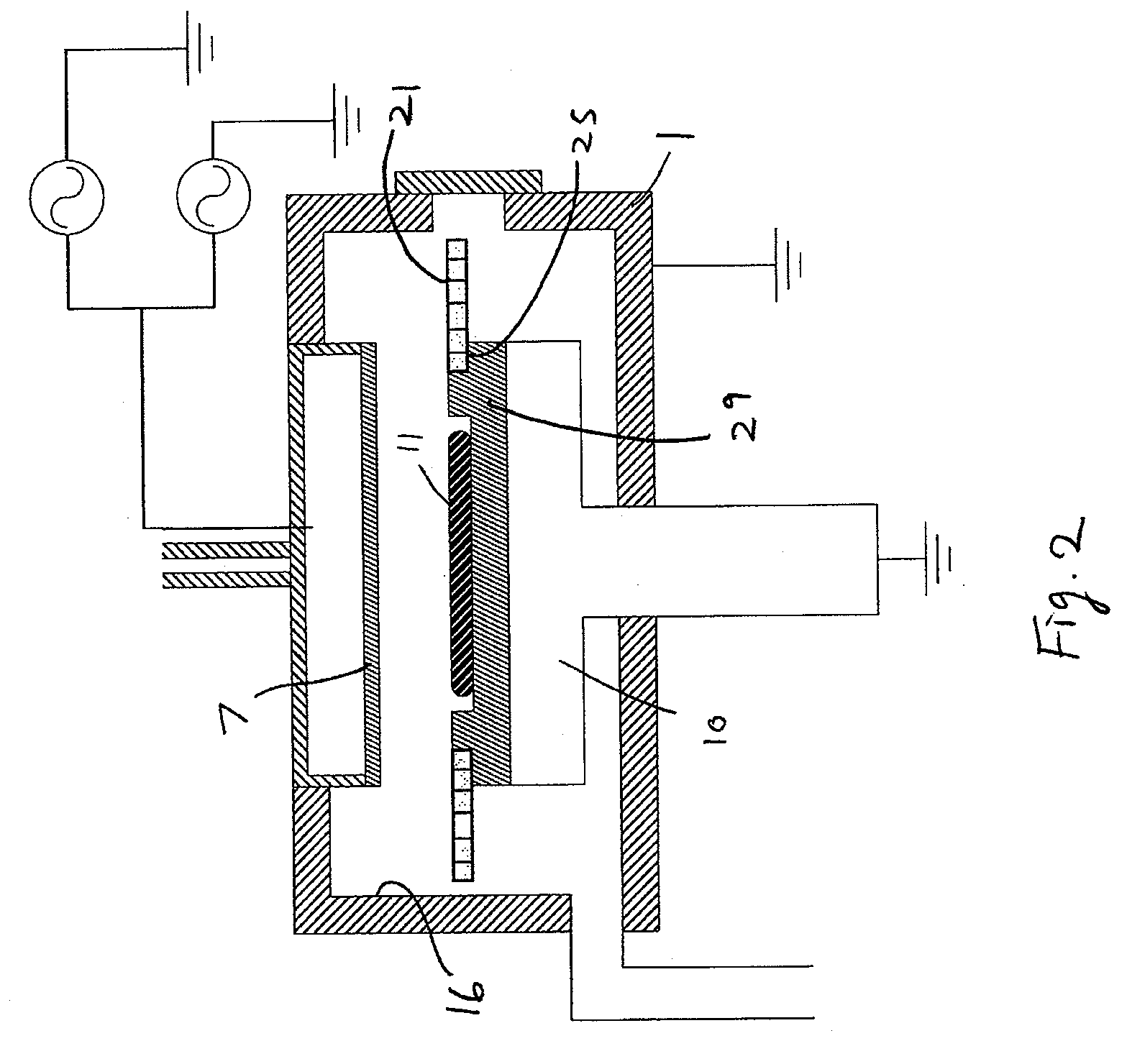Plasma CVD apparatus equipped with plasma blocking insulation plate
a technology of plasma blocking and plasma cvd, which is applied in the field of single-wavefer processing of plasma cvd apparatus, can solve the problems of not meeting film quality and other requirements, reducing the floating potential, and not sufficiently adjusting the plasma processing conditions, so as to reduce the occurrence of plasma charging damage and pickup problems, the floating potential is low
- Summary
- Abstract
- Description
- Claims
- Application Information
AI Technical Summary
Benefits of technology
Problems solved by technology
Method used
Image
Examples
example 1
[0072]FIG. 2 shows the best mode of embodiment 1. In this example, an insulation plate 21 is placed on the susceptor 15 and moves together with the susceptor 15, as shown in FIG. 2.
[0073]The insulation plate 21 comprises a ceramic disc whose thickness is in a range of approx. 1 mm to approx. 10 mm (or preferably in a range of 1 mm to 5 mm, or more preferably in a range of 2 mm to 4 mm), and whose inner diameter is greater than the semiconductor substrate 11 while whose outer diameter is equal to or greater than 95% of the distance from a top plate 29 to an interior wall 16. In other words, the insulation plate must not contact the semiconductor substrate 11, and its inner diameter must be smaller than the semiconductor substrate 11 so that the insulation plate will not overlap with the semiconductor substrate 11. FIG. 10(b) shows a cross-section BB of the structure shown in FIG. 10(a). The gap between the substrate 11 and a lip 27 is not shown. The insulator 21 is attached to the ou...
example 2
[0090]In Example 2, the insulation plate is affixed. As shown in FIG. 7, an insulator 71 is affixed on a support 72 at the bottom of the reactor 1 so that its position aligns with the height of the bottom edge of the top plate (i.e., the insulator is positioned in a manner preventing the heating block 10 from being exposed).
[0091]Here, the insulator 71 may preferably be set above the bottom face of the heating block 10. FIG. 13 shows an example where an insulator 120 is arranged below the bottom face of a heating block 101. According to this structure, plasma enters the space between the heating block 101 and insulator 120, which is undesirable.
[0092]Desirably the gap between the susceptor and insulator may be minimized. Even when the insulator is affixed to the bottom of the reactor, the gap from the susceptor may preferably be kept to 2 mm or less.
[0093]The inner diameter of the insulation plate 71 is roughly the same as the outer diameter of the susceptor, while the outer diamete...
example 3
[0099]In Example 3, multiple insulation plates are used. FIG. 8 shows one example of this configuration. This configuration is characterized by setting two or more of the insulation plate shown in Example 1 and Example 2. A desired pattern of combination or number of insulation plates can be selected according to the apparatus.
[0100]In FIG. 8, one insulation plate 81 (movable insulation plate) is affixed onto the susceptor (top plate 89), while another insulation plate 83 (fixed insulation plate) is affixed onto the reactor 1. The two insulation plates are respectively set in positions where the insulation plates will not contact each other even when the susceptor moves up and down. Here, the movable insulation plate is positioned above, while the fixed insulation plate is positioned below. Accordingly, having a slight gap between the susceptor and fixed insulation plate positioned below will not present any problem because plasma can be shielded by the movable insulation plate posi...
PUM
| Property | Measurement | Unit |
|---|---|---|
| diameter | aaaaa | aaaaa |
| diameter | aaaaa | aaaaa |
| diameter | aaaaa | aaaaa |
Abstract
Description
Claims
Application Information
 Login to View More
Login to View More - R&D
- Intellectual Property
- Life Sciences
- Materials
- Tech Scout
- Unparalleled Data Quality
- Higher Quality Content
- 60% Fewer Hallucinations
Browse by: Latest US Patents, China's latest patents, Technical Efficacy Thesaurus, Application Domain, Technology Topic, Popular Technical Reports.
© 2025 PatSnap. All rights reserved.Legal|Privacy policy|Modern Slavery Act Transparency Statement|Sitemap|About US| Contact US: help@patsnap.com



